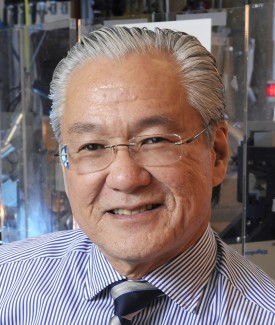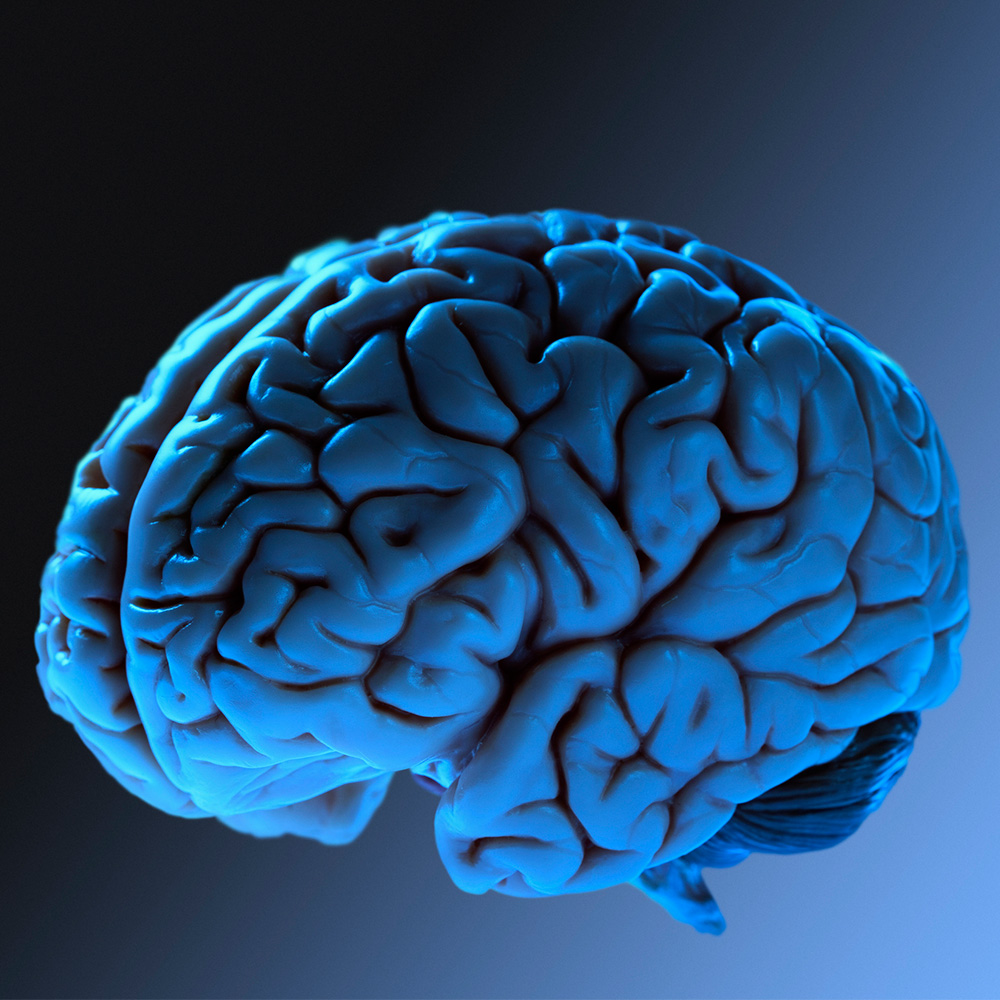Renowned circadian rhythms scientist identifies neurons that control body clock

Dr. Joseph Takahashi, known for landmark discoveries in the field of circadian rhythms, this past year identified key cells within the brain that are crucial for determining the 24-hour rhythms of the body.
Studies in the 1970s revealed that circadian rhythms – the process that controls everything from sleep and wake cycles to metabolism and hormone production – are generated by the suprachiasmatic nucleus (SCN) located within the hypothalamus region of the brain. But it had remained a mystery for all these years as to which of the many thousands of neurons in the region were involved.
“We found that a group of SCN neurons that express a neuropeptide called neuromedin S (NMS) is both necessary and sufficient for the control of circadian rhythms,” said Dr. Takahashi, Chairman of Neuroscience, who holds the Loyd B. Sands Distinguished Chair in Neuroscience.
A neuropeptide is a protein that neurons, or brain cells, use to communicate. The researchers created a unique mouse model to determine that NMS-expressing neurons act as cellular pacemakers. Specifically, Dr. Takahashi’s research team found that modulating the internal clock in just the NMS neurons altered the circadian period throughout the whole animal.
In addition, the study showed that these same NMS neurons were required for the generation of normal circadian rhythms. Neurosecretory communication from NMS neurons was required to maintain synchrony among cells within the SCN clock system.
In 1997, Dr. Takahashi made a landmark discovery identifying and cloning the first mammalian gene related to circadian rhythms. The gene was name Clock. Since then, the Takahashi lab has made many more discoveries related to circadian rhythm, including the finding that disruptions in the Clock and Bmal1 genes in mice can alter the release of insulin by the pancreas, resulting in diabetes.
Research on circadian rhythms is important because it may offer targets for future treatments of a variety of diseases including sleep disorders, Alzheimer’s disease, diabetes, cancer, and depression.
In recognition of this distinguished research, Dr. Joseph Takahashi was elected last year to the prestigious National Academy of Medicine, formerly the Institute of Medicine. Members of the National Academy of Medicine (NAM) help shape policies affecting public health and advise the federal government on issues involving medical care, research, and education. Selection is based on international distinction in science, clinical medicine, public health, or medical administration. Inductees are elected by incumbent members. With Dr. Takahashi’s election, 19 current UT Southwestern faculty members have been inducted into the NAM.
In 2003, Dr. Takahashi was elected to the National Academy of Sciences, another prestigious organization that includes 23 current or former UT Southwestern faculty members.
Dr. Takahashi’s findings have important implications relevant to a broad range of diseases. He was the first to identify a gene that is responsible for the circadian rhythms that govern virtually every aspect of life, including sleeping, waking, and eating,” said Dr. Daniel K. Podolsky, President of UT Southwestern and holder of the Philip O’Bryan Montgomery, Jr., M.D. Presidential Chair in Academic Administration, and the Doris and Bryan Wildenthal Distinguished Chair in Medical Science.




